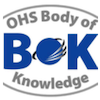Chapter 23.1: Electricity
Abstract
Electricity, present in all workplaces, kills a significant number of workers every year. Most of these fatalities occur outside the electricity supply industry. Effective control of electrical hazards needs to consider the nature of the work and the exposure, and include appropriate controls for electrical workers outside the electricity supply industry and for non-electrical workers. While control of electrical hazards requires specialist knowledge, the generalist Occupational Health and Safety (OHS) professional has a vital role in stimulating critical analysis to ensure electrical safety is effectively integrated into an organisation’s OHS management system and risk management processes for both electrical and non-electrical workers. To deliver on this role, the OHS professional should understand the basic physics of electricity and how electricity causes injury and death, the regulatory framework, standard controls for both electrical and non-electrical work, and how the controls might fail. This chapter and an appendix addressing the high-risk event of arc flash present this information from the perspective of the generalist OHS professional.
Keywords: electricity, electrocution, voltage, burns, induction, arc flash, safety, control
First year of publication: 2012
Current Version: 2021
Chapter 23.1: Physical Hazards - Electricity
Table of contents
| 1 | Introduction |
| 2 | Historical perspective |
| 3 | Extent of the problem |
| 4 | Understanding electricity |
| 4.1 | The nature of electricity |
| 4.2 | Generation, transmission and distribution |
| 4.4 | Energy storage |
| 5 | Health and injury outcomes associated with electricity |
| 5.1 | Electric shock and burns as result of direct contact |
| 5.2 | Health effects of working near electricity |
| 6 | Legislation and standards |
| 7 | Working near electricity- non-electrical workers |
| 7.1 | Overhead power lines |
| 7.2 | Underground cables |
| 7.3 | Downed cables |
| 7.4 | Lightning |
| 7.5 | Static Electricity |
| 7.6 | Other hazards associated with electricity |
| 8 | Working on electrical installations: electrical workers |
| 8.1 | Licensed/registered electrical workers |
| 8.2 | Working on de-energised equipment |
| 8.3 | ‘Live’ work |
| 9 | Control of electrical risk |
| 9.1 | All workers |
| 9.2 | Electrical workers |
| 9.3 | Control of static electricity |
| 9.4 | Failures in control |
| 9.5 | Post-incident management |
| 10 | Implications for OHS practice |
| 11 | Summary |
| Sources of information | |
| References |
Purchase the AUDIO chapter here through AIHS
OR

Leo Ruschena MSc, MIER, BEng, BEcon, GradDip OrgBeh, CFSIA, ChOHSP
Leo retired as a Senior Lecturer in OHS from RMIT University (2003 – 2018). He is currently Chair of the Australian Institute of Health and Safety (AIHS) College of Fellows Policy Committee, and on the OHS Body of Knowledge Advisory Panel. Prior to his tenure at RMIT, Leo held executive HR/OHS roles in WorkSafe Victoria and in the electricity industry in Victoria and the ACT. He has a particular interest in the strategic involvement of health and safety to improve organisational effectiveness.
Learning Outcomes: Electricity
The OHS Body of Knowledge takes a conceptual approach which enables it to be applied in different contexts and frameworks. To optimise its value for education and professional development learning outcomes have been developed for each technical chapter in the Body of Knowledge.
The learning outcomes as described give an indication of what should be the capabilities of a new graduate OHS professional in the workplace. I t is up to those developing OHS education programs, OHS professionals planning their CPD or recruiters or employers selecting or developing people for the OHS function to consider the required breadth vs. depth
Articles
Safety Alert: Worksafe Queensland
Fine highlights importance of staying well clear of powerlines
Date: 2021
Source: https://www.worksafe.qld.gov.au/news-and-events/newsletters/esafe-newsletters/esafe-editions/esafe/june-2021/fine-highlights-importance-of-staying-well-clear-of-powerlines?utm_medium=email&utm_campaign=eSAFE+Newsletter+-+June+2021&utm_content=Fine+highlights+importance+of+staying+well+clear+of+powerlines&utm_source=www.vision6.com.au
Published 2012 Chapter 23.1 Electricity

